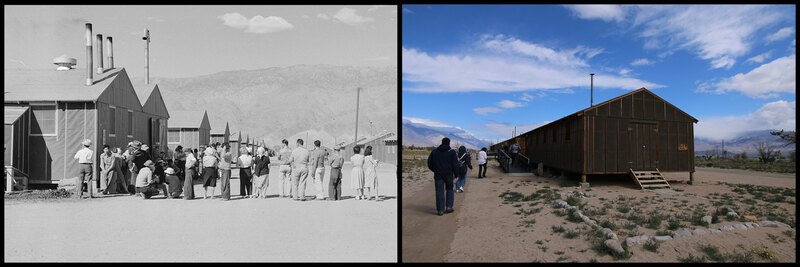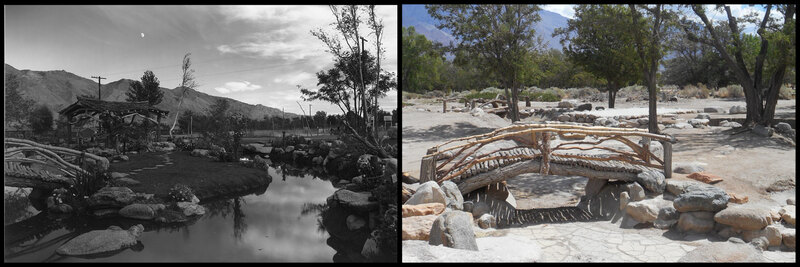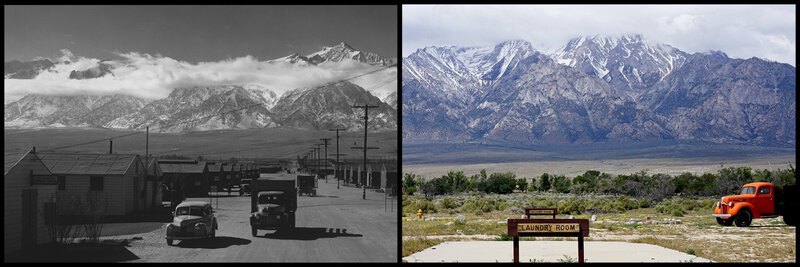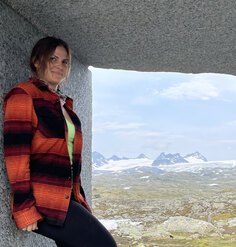Olmsted Scholar Feature: Illumination Sites of Our Multicultural Heritage to Promote Social Justice
By Kristi Lin, 2017 National Olmsted Scholar Finalist
Although I had heard my Japanese-American grandparents talk about being incarcerated during World War II, it wasn’t until I went to Manzanar National Historic Site, a former Japanese incarceration camp, that I realized their stories were real. Walking the actual paths behind the barbed wire fence at Manzanar allowed me to get a glimpse from their perspective. What I experienced in this landscape ignited my passion to protect the civil rights of all people today so that this history is never repeated. At Manzanar, I discovered the potential of landscape architects to promote social justice through illuminating sites of our multicultural heritage.

After entering Manzanar, I walked on the worn sandy paths to the barracks. From there I went to the mess hall and latrine. Walking in the footsteps of those who had traveled these paths countless times, I could not help but imagine: what would I do if I had to live like this? My grandfather was a U.S. citizen, born in Berkeley, California and beginning high school when he and his family were forced to leave their home and go to an incarceration camp. What would I do if I had to leave all my friends and live in this desolate place because of my ancestry? I had heard “camp stories” practically since the day I was born, but it wasn’t until going to Manzanar that I could put myself in their shoes.

The views were incomparable to any of the black and white photos I had seen before. The dry desert punctuated by the barbed wire fence made me feel powerless to speak up, demand a fair trial, or escape. In stark contrast, I was calmed by the view of Merritt Park, a Japanese-style garden in Manzanar that the incarcerees designed with placed stones, a pond, and delicate plantings to provide respite from their bleak surroundings.
Witnessing Manzanar made me think about the relevance of this story to today. For my grandparents, looking like the enemy caused them to lose their civil rights. As their granddaughter, it is my duty now to protect the civil rights of all people. Towards this goal, I have helped lead Manzanar Pilgrimages, a program where diverse college students, community activists, and former Japanese-American incarcerees travel together to Manzanar and build cross-cultural understanding.
What can landscape architects learn from Manzanar about designing interpretive sites? Recently, I interviewed landscape architect Dennis Otsuji, FASLA who helped the National Park Service design Manzanar National Historic Site in the 1990s. Otsuji organized design charrettes with a team of Japanese-American landscape architects, all of whom were formerly incarcerated. The team included: Asa Hanamoto, FASLA; Ronald Izumita, FASLA; Hideo Sasaki, FASLA; Joseph Yamada, FASLA; Frank Kawasaki, FASLA; Robert Murase, FASLA; and Ken Nakaba, FASLA. Understanding the importance of circulation and views in site design, the team’s first priorities included restoring the original street grid, barbed wire fence around the whole site, and guard tower at the visitors’ entrance. These were all restored in the locations and materials of 1942 to ensure undeniable authenticity. When I asked Otsuji how landscape architects can promote social justice, he said that the most important goal is to interpret historic sites with accuracy.

Reflecting on Manzanar, I am convinced that landscape architects can use their understanding of circulation, views, and resource protection to help illuminate sites significant to our multicultural heritage and thereby raise awareness about the importance of diversity and inclusion. How do we measure the success of such landscapes? I believe we must ask, are we offering visitors the chance to experience history accurately and authentically through honoring artifacts and significant sites? How many people are visiting? Is the landscape connected to programs through which people can engage with it from multiple viewpoints and after they have visited? Can we help increase diversity in the National Register of Historic Places where only 3% of the 77,000 properties listed were explicitly associated with African-American, Mexican-American, and Asian-American heritage in 2004? (Data from “Historic places and the diversity deficit in heritage conservation” by Ned Kaufman, 2004. I could not find statistics on sites associated with Native Americans and Pacific Islander Americans.) By using landscapes to help tell diverse stories, I believe that landscape architects can promote social justice and become agents of change.
Kristi Lin graduated with a Bachelor of Science in Landscape Architecture from the University of California, Davis. She is currently a fellow at The Cultural Landscape Foundation in Washington, D.C.










